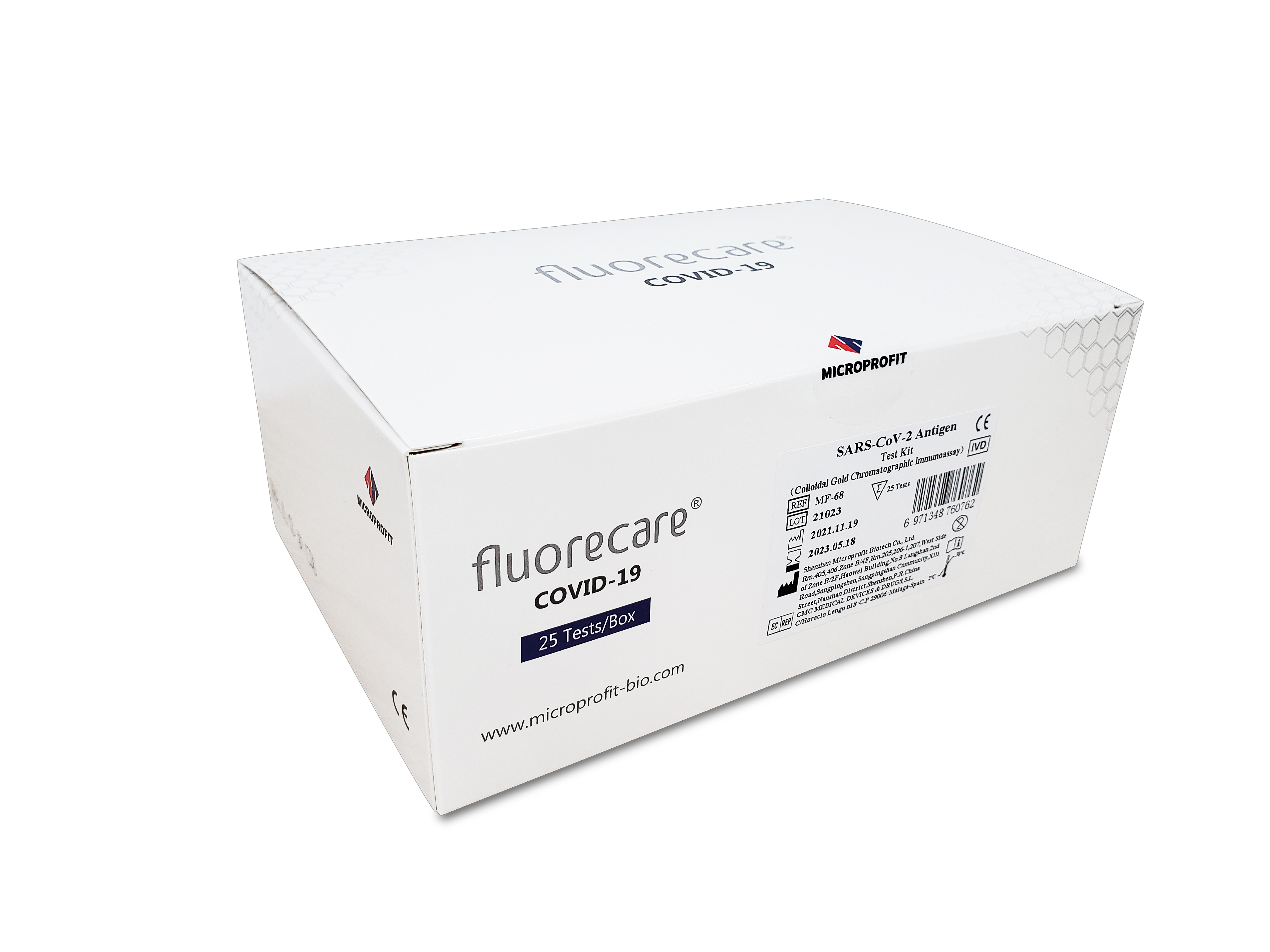
Population Novel Coronavirus (SARS-CoV-2) Spike Protein is qualitatively detected in Oropharyngeal swabs or Nasopharyngeal swab specimens by Immunochromatographic method. After mixing the population Oropharyngeal swabs or Nasopharyngeal swabs, the novel Coronavirus (SARS-CoV-2) Spike Protein in the sample to be tested is coupled with the fluorescently labeled novel coronavirus (SARS-CoV-2) antibody on the binding pad SARS-CoV-2 Spike Protein- To form a fluorescently labeled complex with the SARS-CoV-2 antibody. Due to chromatography, the SARS-CoV-2 Spike Protein-SARS-CoV-2 antibody diffuses across the fluorescently labeled complex nitrocellulose membrane. Within the detection line area, the SARS-CoV-2 Spike Protein-antibody complex binds to the antibody contained within the detection line area and displays a red band (with fluorescent lamp). The fluorescently labeled SARS-CoV-2 antibody spreads to the quality control line (C) region and is captured by sheep anti-mouse IgG to form red bands. The dedicated analyzer can read the results when the reaction is finished. The optical density of the control line and test line will be analyzed by fluorecare® MF-T1000 analyzer. SARS-CoV-2 Spike Protein concentration will be calculated with the preset calibration curve and results will be displayed in S/CO units.
1.This kit is a qualitative test and is used for in vitro ancillary diagnosis only.
2.With the limit obtained from the Spike Protein detection reagent method, the minimum limit of detection (sensitivity analysis) is usually lower than that of the nucleic acid reagent. Therefore, the researcher should pay attention to possible false negative situations. The investigator should also look at patients' symptoms. Further testing, including nucleic acid tests for suspected negative results, is recommended to aid decision making.
3.Improper sampling, handling, processing and low virus content in samples can cause false negatives.
4.Test results for this reagent are for clinical reference only and should not be used as the sole basis for clinical diagnosis and treatment. The definitive diagnosis of the disease should be based on a comprehensive assessment of all clinical conditions and laboratory results once made.